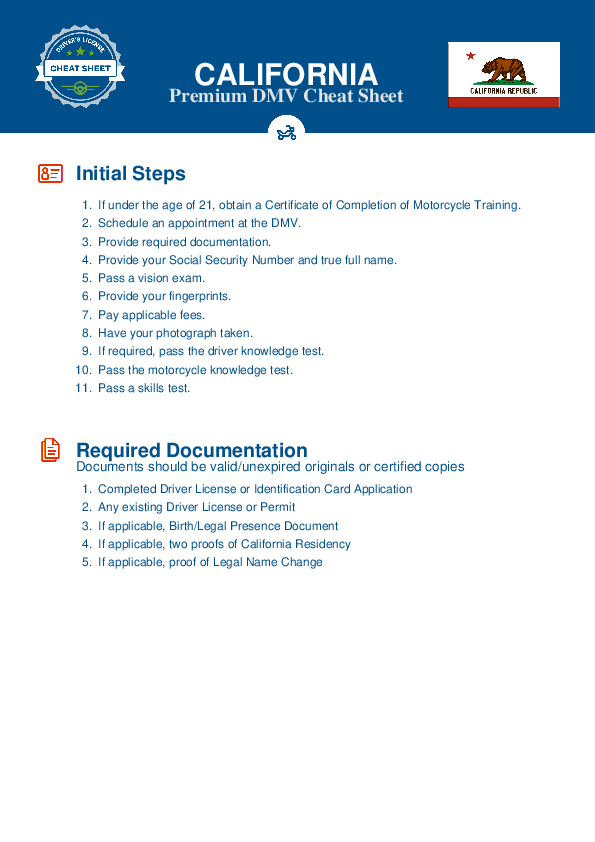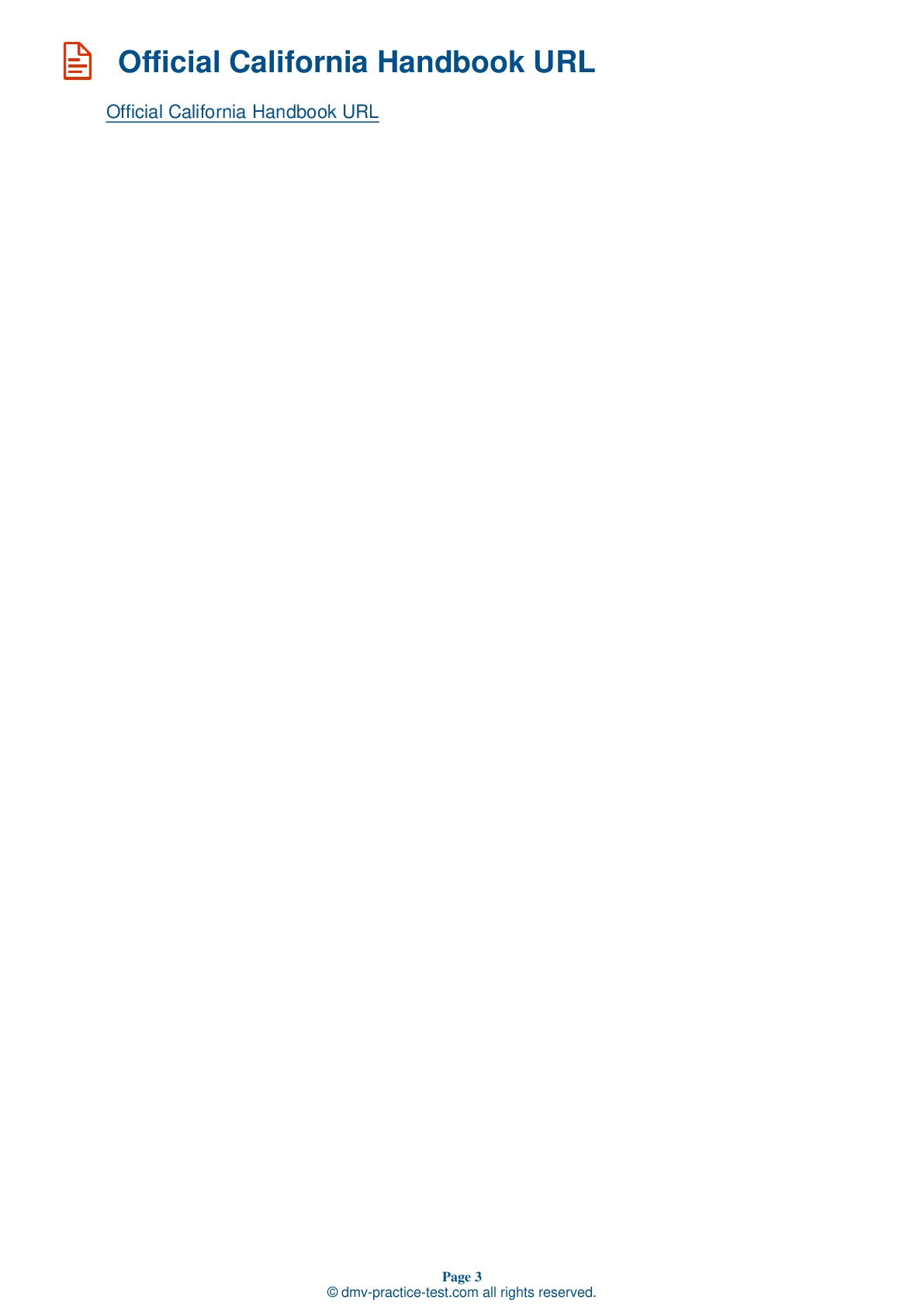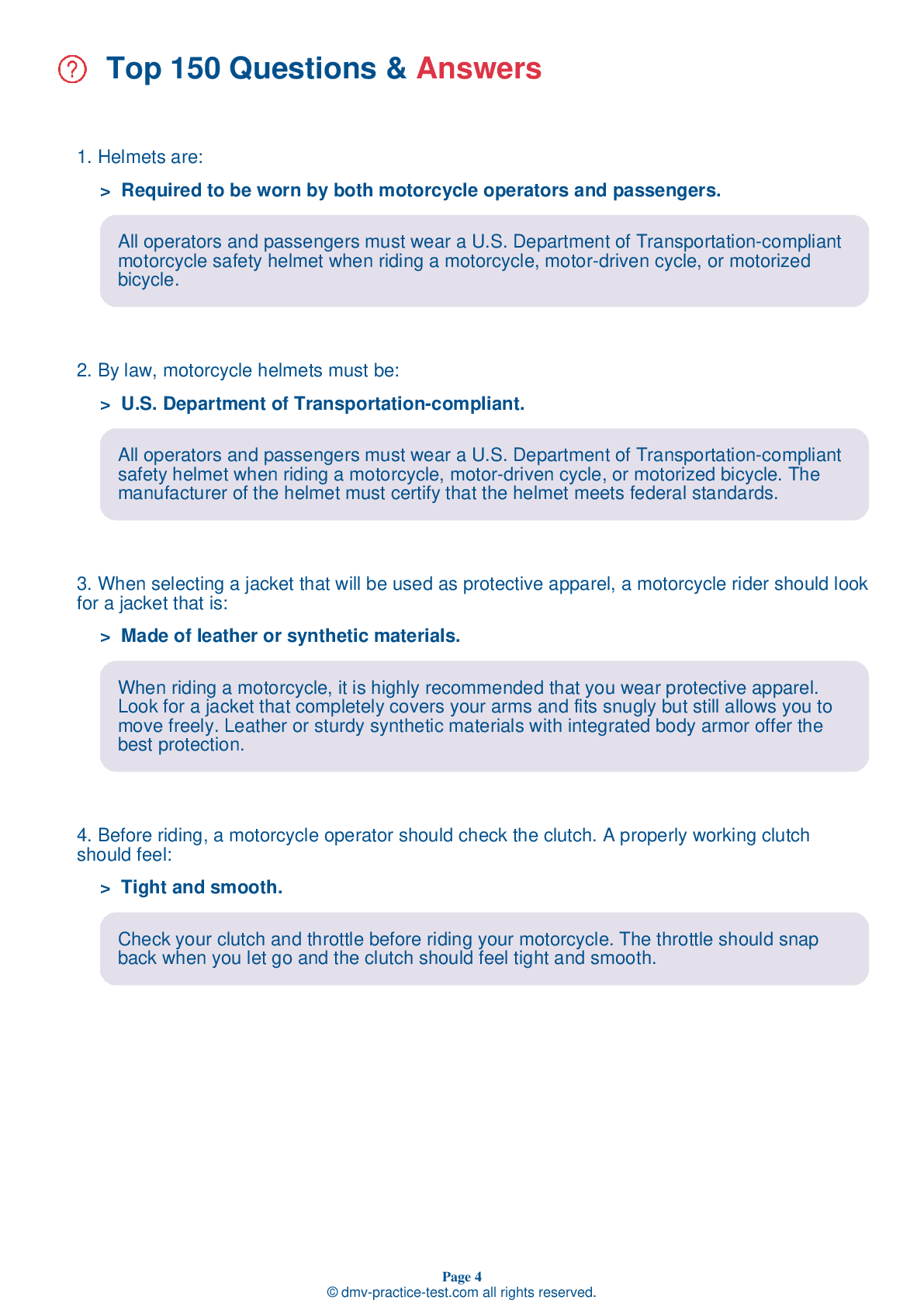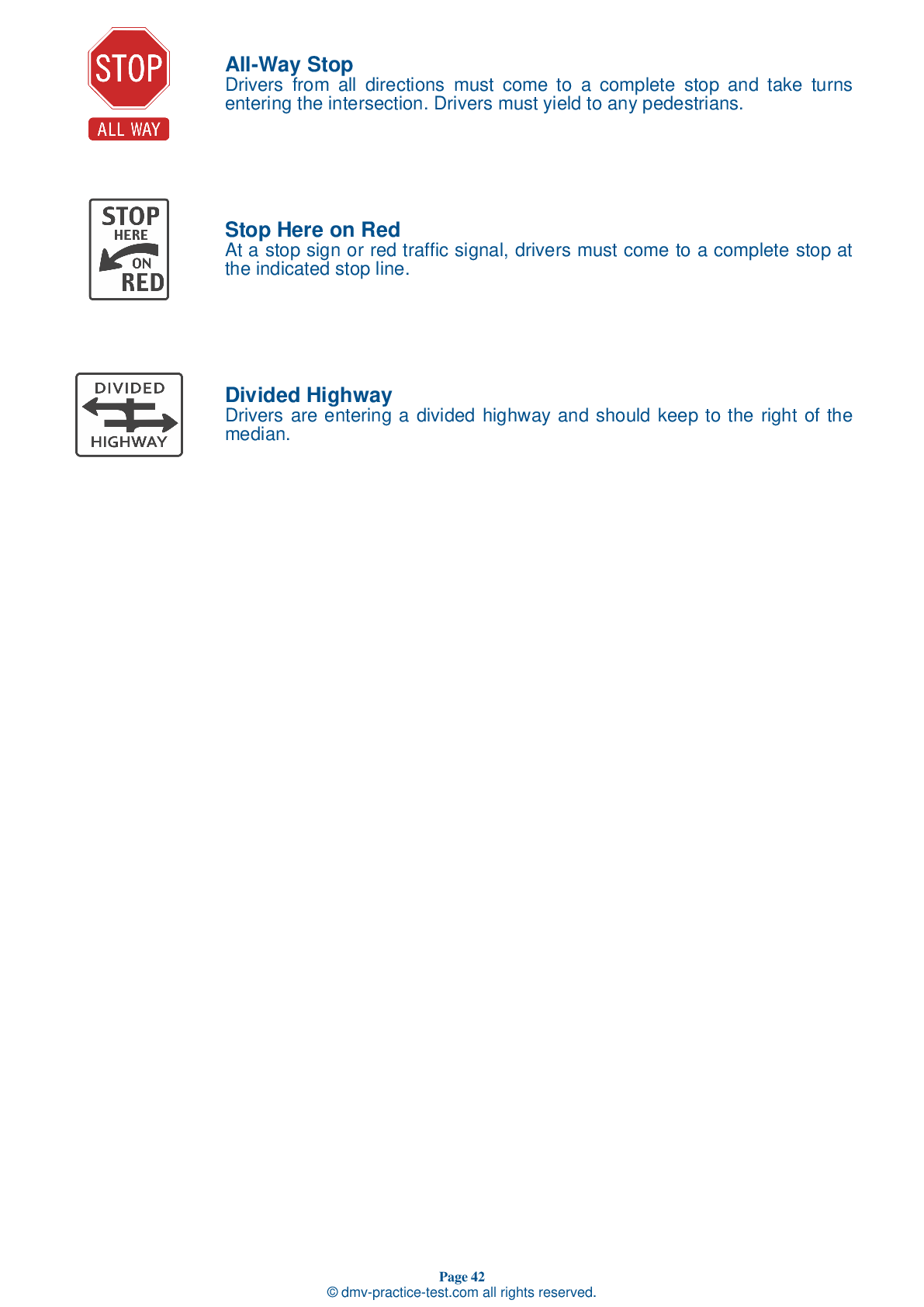Motorcycle Test | License CA 2025 | FREE Online Practice! #16
Take this FREE motorcycle test (license in CA 2025) to check your knowledge of the road rules. To improve your results, download a motorcycle handbook online, study theory, and practice for free on our website. Still worried about how to get a motorcycle license in California in 2025? Check our website for more sample tests, train as much as possible, and boost your grades!
1 . When you see this road sign, you should:
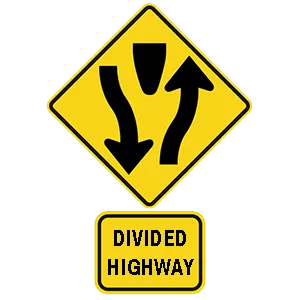
Warning signs are usually yellow with black markings. This sign indicates that a divided highway is beginning and cars should keep to the right.
2 . A motorcyclist should attempt to avoid obstacles on the roadway. If avoiding an obstacle is not possible, the motorcyclist should:
If you are unable to avoid an obstacle and must instead ride over it, you should slow down and approach the obstacle at as close to a 90-degree angle as possible.
3 . To swerve correctly, you should:
To swerve away from a hazard, apply a small amount of pressure to the handgrip located on the side of your intended escape.
4 . A motor-driven cycle:
A motor-driven cycle is a motorcycle with a motor size that is under 150cc. Motor vehicles with a motor size under 150cc do not have the engine capability to be safely driven on a freeway or expressway. Operators must have a Class M1 license to operate a motor-driven cycle.
5 . To operate a motorcycle, you must have a _____ license.
A Class M2 license allows you to operate a motorized bicycle, moped, or motorized scooter. A Class M1 license allows you to operate all of these, as well as any two-wheeled motorcycle or motor-driven cycle. A Class C license allows you to operate a motorcycle with a sidecar attached, a three-wheeled motorcycle, or a motorized scooter.
6 . In the center of a traffic lane, there is usually an oily strip. Motorcyclists should:
Avoid riding on oil and grease buildup. Because the oily strip in the center of a lane is usually no more than two feet wide, it is often possible to stay to the left or right side of the oil and still be in the center portion of the lane.
7 . In areas where dangers could be present, a motorcyclist should:
In high-risk areas, such as intersections, shopping areas, schools, or construction zones, a motorcyclist should reduce their speed. They should cover the clutch and both brake levers to reduce their reaction time in the case of an emergency.
8 . When gripping the handle grips, your hands should:
Adjust the handlebars so your hands are even with or below your elbows. This positioning allows you to use the proper muscles for precision steering.
See the exact questions that will be on the 2025 California DMV exam.
99.2% of people who use the cheat sheet pass the FIRST TIME
Jeneen was tired of paying $5/gallon. She got herself a scooter that required the motorcycle license. She studyed the motorcycle test cheat sheet and passed her test the next day!
Christopher tells us how he knew nothing prior to obtaining the motorcycle study guide, and he only got one question wrong because he clicked on the wrong answer by mistake.
